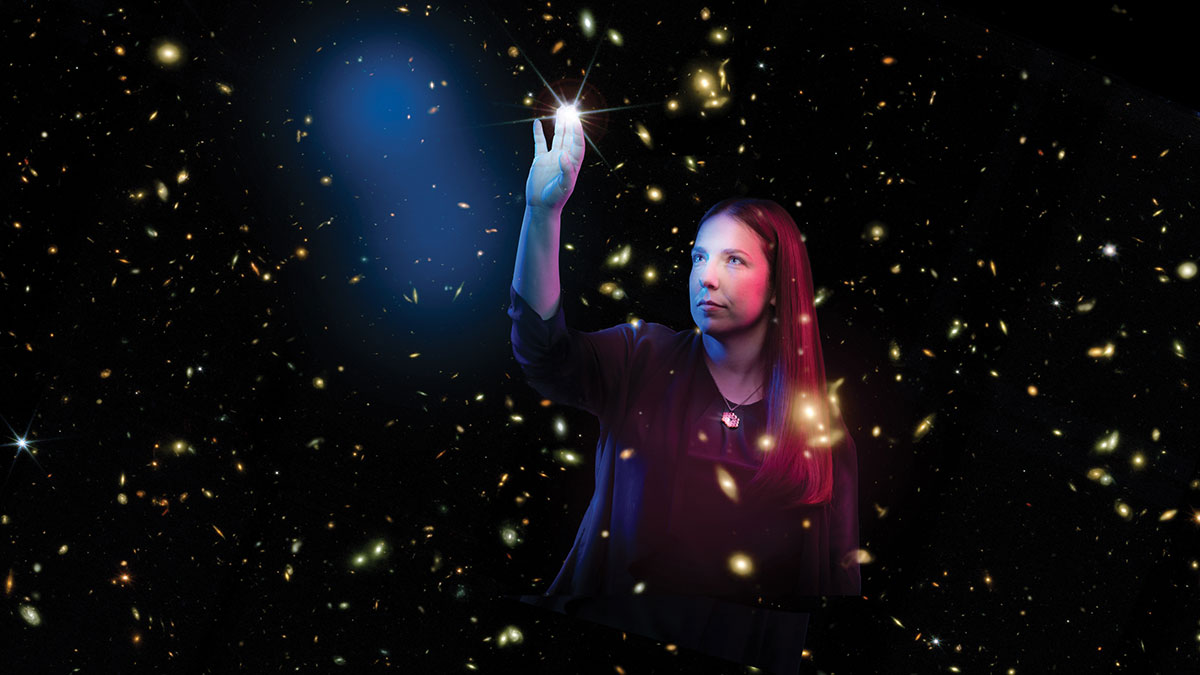Windows on the Universe

Windows on the Universe
- RIT/
- College of Science/
- Research/
- Windows on the Universe
With multidisciplinary programs administered by multiple schools, RIT stands out from traditional universities when researching the universe beyond the confines of Earth.
Astronomical Instrumentation

RIT faculty in the Center for Detectors are involved in the design and development of the next generation of instruments and technologies for astrophysics. Faculty participate in a variety of ground-based, sub-orbital, and orbital programs designed to probe from our solar system and galactic neighborhood out to the most distant regions of our universe.
Astronomy

The Laboratory for Multiwavelength Astrophysics fosters the utilization and advancement of cutting-edge techniques in multiwavelength astrophysics by RIT faculty, research staff, and students, so as to improve human understanding of the origin and fate of the universe and its constituents.
Actively Conducting Research
Geometry, Relativity, and Gravitation
Current work in the unit includes applications of differential geometry, numerical solutions of partial differential equations, and statistical inference to problems related to general relativity and celestial mechanics. Einstein's general theory of relativity is studied as a description of the geometry of spacetime. Advanced numerical and computational techniques are used to solve the coupled, nonlinear, system of PDEs of General Relativity and Magneto-Hydrodynamics. As part of the LIGO Scientific Collaboration, SMS faculty and researchers use statistical signal processing techniques to search for, identify and characterize gravitational-wave signals from astrophysical systems.
Multi-messenger and Multi-wavelength Astrophysics

RIT faculty participating in the Center for Computational Relativity and Gravitation and the Laboratory for Multi-wavelength Astrophysics conduct observational and theoretical research across a wide range of topics in multi-messenger and multi-wavelength astrophysics, utilizing a combination of observations spanning the electromagnetic spectrum, data from gravitational wave detectors, and supercomputer simulations. Current areas of research include numerical relativity and relativistic magnetohydrodynamics, gravitational wave data analysis, compact object binaries, accretion disks and jets, galaxy formation and evolution, large-scale structure, active galactic nuclei, observational and experimental cosmology, early and late stages of stellar evolution, protoplanetary disks, planetary nebulae, the interstellar medium, supernovae, and pulsars. RIT is a member of the Large Synoptic Survey Telescope Corporation and faculty are involved in several major collaborations including the Laser Interferometer Gravitational-Wave Observatory Scientific Collaboration, the NANOGrav Pulsar Timing Array Consortium, the Laser Interferometer Space Antenna, and the Cosmic Evolution Survey.


























